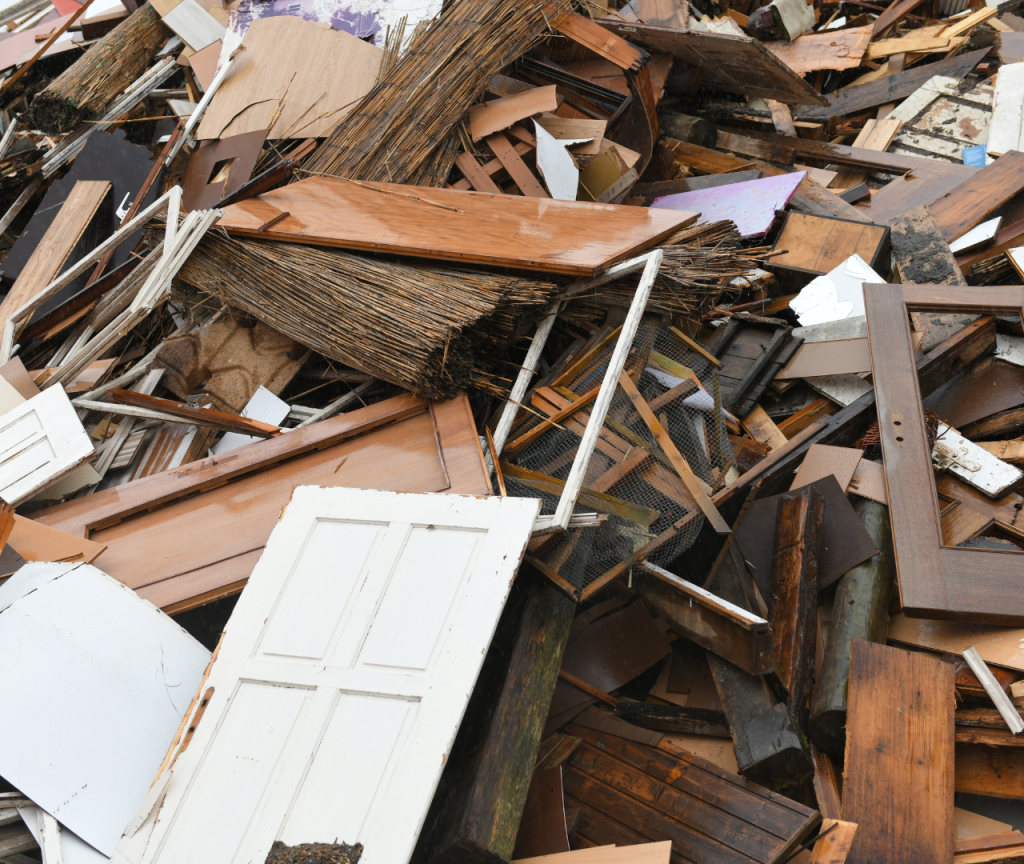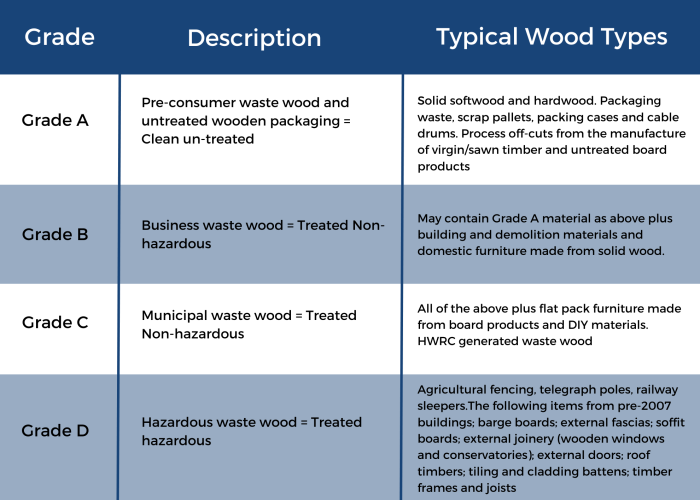Wood is one of the most readily recyclable waste materials. Alan’s Skip Hire receives source-segregated waste wood and also separates wood from mixed waste streams. Some of this is recycled and used to power our biomass boilers and the rest is recycled and then used in panel board manufacturing. This is classed as Grade A and B wood (see table below).
The overwhelming majority of waste wood is non-hazardous which makes recycling it straightforward. However, from September 1st 2023 the withdrawal of Regulatory Position Statement 250 (RPS 250) means that a small number of items from pre-2007 buildings are automatically classified as contaminated / hazardous (Grade D) and unable to be sent for wood recycling. This is in addition to telegraph poles, fence posts and railway sleepers which are already known to be hazardous due to the presence of preservatives such as copper chrome arsenic (CCA) and creosote.
The pre-2007 buildings items are:

- Barge boards
- External fascia
- Soffit boards
- External joinery
- External doors
- Roof timber
- Tiling cladding
- Tiling battens
- Timber frames
- Timber joists
These items may be non-hazardous, but further testing is required to confirm this.
A visual guide for these items can be found here:
What do I need to do?
If you need a skip for waste wood and it does, or is likely to, contain one or more of the above items, contact us. We can provide a skip for other waste wood items for recycling but for the items above we’d need proof that it is not hazardous. This can be done through laboratory testing which we can advise on; we could even arrange it on your behalf so that the correct testing is carried out and added to the national database (anonymously). If the test came back as non-hazardous, the wood could be recycled with the rest of the waste. If it is hazardous, it will need to be sent for hazardous waste treatment. We can also arrange this.
If you need a skip or container for mixed waste streams but it includes the items above, the same principles apply. Just let us know and we will help you out to ensure your legislative compliance.
We’d strongly advise against consigning all waste wood as hazardous; it is significantly more expensive than non-hazardous wood recycling.
How much hazardous wood is there?
The Wood Recycling Association has done a massive amount of work prior to the withdrawal of RPS 250. It found an extremely low amount of waste wood is likely to be hazardous, around 0.08% of total UK waste wood.
What happens to the hazardous wood?
It is incinerated under tightly controlled and heavily regulated conditions to ensure that the emissions are clean. The heat is captured and used to generate electricity
What are the wood grades?
The table below provides details on the four grades of wood waste. We can recycle Grades A, B and C and arrange treatment of Grade D wood.

